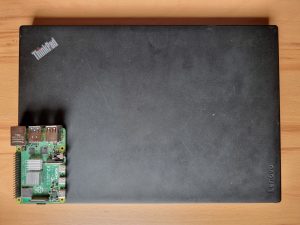Gaming laptops are flashy, overly expensive, run hot and have battery life that is measured in seconds. Thats the sterotypical view many people have on this portable computer category. For many years this was actually true but todays microchips have high enough efficiency to work at incredible speed and performance in small enclosures. Clever design and advanced liquid metal, vapor champers and special alloy technology have also solved the extreme temperature problems. There even is an increasing market for sensible gaming laptops without flashy RGB leds all over it. All problems solved? Not quite. One problem still persists!
Battery life problems
While the cooling solutions improved with the efficiency of the chips, running a modern CPU at its max draws huge amounts of power. A highend gaming laptop chip like the i9 12900H usually has a TDP of 45W with turbo peaks reaching to 115W! These are enormous amounts of power and need to be kept running somehow. In a laptop that needs to be used on the go all this juice is comming from a battery. And because they should not wheight 10kg and because there are airline travel limits on the battery capacity there are some general limitations regarding this part. The general maximum capacity you are going to find is 100Wh meaning you can draw 100W for an hour before the battery is empty.
When the laptop is drawing 50W only for the CPU and completly disregarding a potentially even more power hungry GPU you can expect the battery to last 2 hours in a good scenario. While this is a terribly unpractical battery life that is actually the reality of many gaming laptops making them unusable without a power outlet nearby.
The solution!
But there is a solution to this enormous problem: Power limits! As simple and profound this may sound it turns out to be not as easy in reality. Of course a chip made for 45W TDP wont simple throtle down to 3W and be happy performing like an ultrabook but there are some possibilites.
G-Helper for Asus laptops
If you own an Asus Laptop there is the community made G-Helper software that i can highly recommend for this. Download it from GitHub here. This programm is similar to ROGs native armoury crate but with a bit more customizability and lightweightness.
settings for maximum battery run time
- Turn on Eco Mode for the GPU to turn it off completly
- Set the screen to 60Hz
- Turn off the keyboard lighting
- Go to Extra and stop all the Asus services from running
- Select the Silent Mode
- Go to Fans + Power
- Put windows power mode on best power efficiency
- Put the CPU Boost to efficient aggressive
- Put the Power limit 1 all the way down to 5W and Power Limit 2 to around 15W
- Click apply power limits
Additional
Turn on the Windows energy saving mode, turn Bluetooth off, reduce the screen brightness to 80%,disable any other unused connections and reduce the background processes to a minmum.
Throttlestop Alternative
Throttlestop is a popular software that allows undervolting and power limiting for your CPU. There are many different tutorials on the internet on how to change its very confusing but potent set of settings to fit your needs and reduce the power consumtion drasticaly. The great thing is that this does work on nearly all computers (at least to some extent).
Result
Through the heavy cutting down of the processor power you should see your displayed discharging wattage go down. In my case of the i9 12900H it reached 10W. Should you reduce the screen brightness even further and have only lightweight office work running on your laptop you can manage to even get to around 8W on such a heavy duty processor. Naturally this allows for much better battery life with the Windows Display literally doubling the estimated runtime from 3,5 to 7 hours. A few tests proved this estimation right resulting in much better battery life then before. And while this has a significant impact on the overall performance, it allows for very long runtime with light offic work making this mode perfect for work, school and university.









Pingback: Computex 2024 – The Age of AI is now here - GLPC
Your point of view caught my eye and was very interesting. Thanks. I have a question for you.